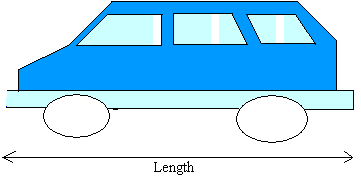17 December 2014
Thank You Hillview
Posted on 13:00 by Anonymous
11 December 2014
Character - what is it, how to strengthen it, my character strengths
Posted on 09:01 by Anonymous
Here is a really interesting video which explores the idea of character - take some time to reflect on the messages it conveys, while considering how to develop aspects of your character that you wish to grow:
30 November 2014
Biology - what does the liver do?
Posted on 19:18 by Anonymous
This video might interest some of you budding biologists and nurses;
16 November 2014
9 November 2014
A logical puzzle
Posted on 21:10 by Anonymous
A logician visits a distant planet inhabited by two groups of aliens, compulsive liars and faithful truth-tellers.
She comes to a fork in a road - one road goes to the left, the other to the right. She meets two aliens there, one a liar, the other a truth-teller... but she doesn't know which is which.
The logician must ask just one Yes/No question to discover which road she should take to reach their leader. She thinks for a moment and then asks her question.
What question might she have asked?
Post your theories and ideas as comments to this post...
She comes to a fork in a road - one road goes to the left, the other to the right. She meets two aliens there, one a liar, the other a truth-teller... but she doesn't know which is which.
The logician must ask just one Yes/No question to discover which road she should take to reach their leader. She thinks for a moment and then asks her question.
What question might she have asked?
Post your theories and ideas as comments to this post...
2 November 2014
Using scale
Posted on 21:12 by Anonymous
This session will introduce you to a number of concepts relating to scale. The learning you've recently done on fractions and multiplication will help you.
For some of these problems you should work with others to solve them so you can discuss the issue. You might find drawing examples on the whiteboard or in your maths books helpful also.
Scale is a practical way to represent something that is large using correct proportions. For example, if you wanted to draw a plan for a swimming pool or a house, you'd obviously not want to draw it using a scale of 1:1, as this would be impractical! You need to represent it on a piece of paper (or the computer) in a way that is manageable. This is what scale is used for...
Example - using a scale of 1:20 for the swimming pool...
Notice that the first number (i.e. 1) always refers to the length of the drawing on paper and the second number (i.e. 20) refers to the length of real-life object.
To read it, think of the " : " as meaning "is to".
1. If the length of the drawing of the vehicle on paper is 12 centimetres, how long is the vehicle in real life?
For some of these problems you should work with others to solve them so you can discuss the issue. You might find drawing examples on the whiteboard or in your maths books helpful also.
Scale is a practical way to represent something that is large using correct proportions. For example, if you wanted to draw a plan for a swimming pool or a house, you'd obviously not want to draw it using a scale of 1:1, as this would be impractical! You need to represent it on a piece of paper (or the computer) in a way that is manageable. This is what scale is used for...
Example - using a scale of 1:20 for the swimming pool...
Notice that the first number (i.e. 1) always refers to the length of the drawing on paper and the second number (i.e. 20) refers to the length of real-life object.
To read it, think of the " : " as meaning "is to".
Problems to solve:
-
Suppose a problem tells you that the length of a vehicle is drawn to scale. The scale of the drawing is 1:20.

2. The scale drawing of this tree is 1:500. If the height of the tree on paper is 20 centimetres, what is the height of the tree in real life?
3. The distance between two towns measures 6cm on a map. What is the true distance if the scale is 1 : 50 000. Provide the answer in kilometres.
4. This next example is the opposite working of #3 above; this time we are looking at the measurement on the map as we have been given the actual distance.
5. The drawing of an Aircraft uses a scale of 1 : 900. If the Aircrafts wingspan is 30m what length on the drawing actually represents this?
- Extra for experts:
The plans of a house show a room to be 4.0m X 3.6m. The dimensions of the room on the plans measure 20mm X 18mm.
What was the scale used? Explain how you worked this out...
Understanding scale...
How germs spread
Posted on 19:43 by Anonymous
Here's an interesting video that some of you might enjoy...
Subscribe to:
Posts (Atom)





